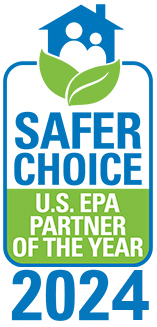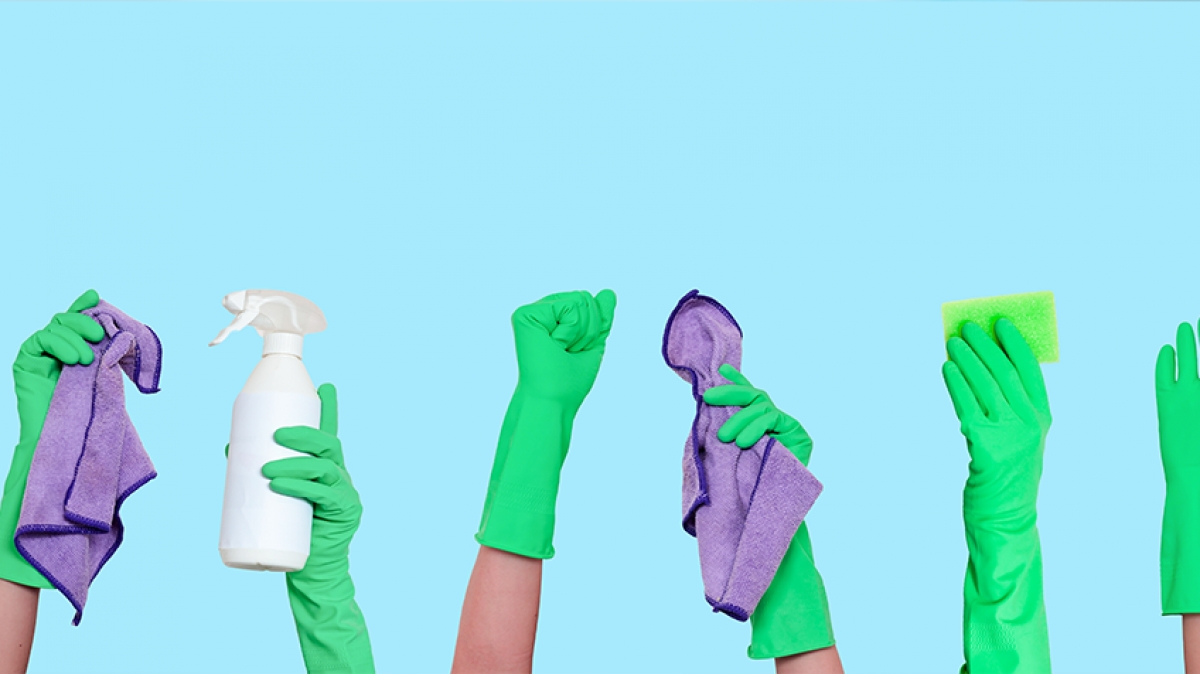Wipes Smear Soil
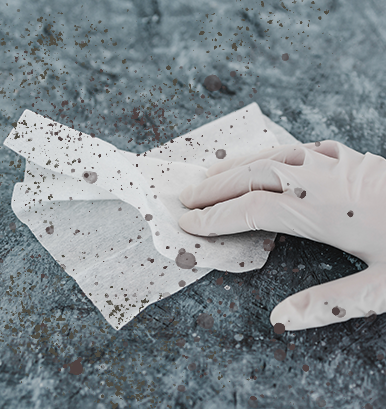
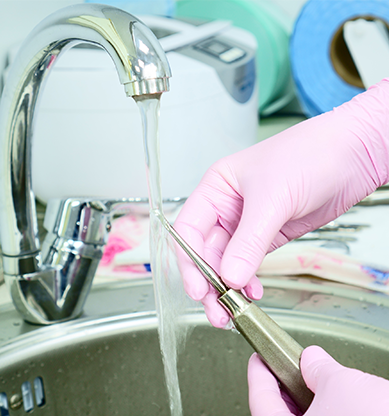
Remember to Clean First, Then Sanitize or Disinfect
Disinfectants were never meant to be a substitute for cleaning. Disinfectants, while effective at killing germs, may not effectively remove dirt, grease, or other contaminants. The CDC states, surfaces should be meticulously cleaned first, and then sanitized or disinfected. Science has proven that simple handwashing is still your best bet over using hand sanitizers. Cleaning with soap and water removes germs and dirt, while rinsing removes any residue. Some folks, including a few key decision makers and clinical experts, balk at this requirement with the excuse that the product in question is non-critical. After all, it says it’s okay to do so on the “label”.
Disinfecting Wipes Contain Hazardous Chemicals
While many disinfecting wipes are "free of bleach", they use quaternary ammonium compounds, or quats, as active ingredients. These chemicals are effective at killing germs and are commonly used in some healthcare settings like hospitals. However, they can also cause health problems like lung irritation, asthma, and allergies. To minimize any potential risks, it's good practice to rinse surfaces with water after using disinfecting wipes. Quats can leave a harmful residue on the surfaces, making them “unsuitable for food prep areas”. The active ingredients in these wipes, alkyl dimethyl-benzyl ammonium chloride; a quaternary ammonium compound can trigger allergic reactions and asthma. “There is no easy fix to antibiotic resistance as microbes evolve mechanisms to protect themselves from antibiotic treatment.” So why is it okay to use them in healthcare settings?
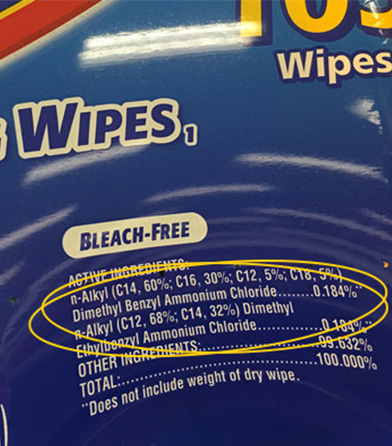
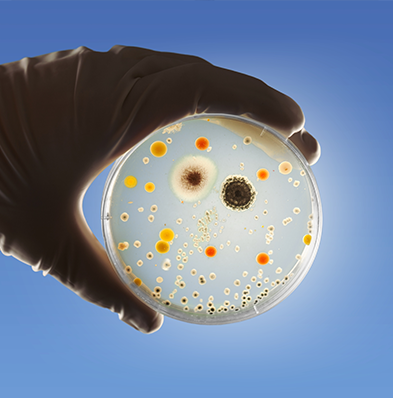
Antibiotic Resistance
A new article suggests improperly used antibiotics may promote antimicrobial resistance and biofilms. Antibiotic resistance is the ability of bacteria, viruses, fungi, and parasites to survive and multiply in the presence of a drug that would normally kill them or inhibit their growth. This occurs when these microorganisms evolve or acquire the ability to withstand the effects of antimicrobial medications. Antibiotic resistance happens when bacteria mutate and become resistant to the antibiotics used to treat the infection they caused. The more antibiotics are used, the greater the chance there is for bacteria to develop resistance. At least 700,000 people per year worldwide die from antibiotic-resistant infections. That is why scientists and healthcare professionals are looking for products that are safer to use and do not contain antimicrobial additives.
False Advertising
This year marks 20 years since the Hasbro company was fined for false advertising, claiming their Playskool toys laden with the antimicrobial chemical triclosan would keep kids healthier.” In September 2016, the Food and Drug Administration (FDA) published an article barring consumers from purchasing and using certain antibacterial soaps. The article described the scientific evidence supporting disuse of antibacterial products. According to the American Society for MicroBiology, “despite these findings, the use of decidedly coercive advertising language continues to lure consumers into making misleading purchases.” In an article from Women Voice for the Earth “What’s more: children are at greater risk to the negative effects of quats than adults. That’s because, in order for their bodies to grow and develop, children need to eat, drink, and breathe more per pound of body weight than adults. Children..are expected to follow directions at school – which means they may not be able to say “no” to the use of hazardous products in their classroom.”

The Simple Solution
Cleaning medical devices before disinfection is crucial because organic and inorganic debris can interfere with the effectiveness of disinfectants and potentially reduce their ability to kill microorganisms. Cleaning removes these materials, ensuring the disinfectant or the sterilant can reach and effectively target pathogens. A simple experiment in our lab proved that a brief swipe or two with a quaternary-based disinfectant caused a low-temperature sterilizer to have an extended cycle or fail.
Case Medical follows best practices, which is why we developed Case Solutions® Multi-Enzymatic Penta Wipes and Case Solutions® Non-Enzymatic CasePrep Wipes for cleaning using U.S. EPA Safer Choice certified ingredients and high-purity, RO water saturated Case Solutions® Rinse Wipes to remove residue as a last resort when rinsing at the sink or washer is not possible. For more information on Case Solutions® Wipes, contact [email protected]
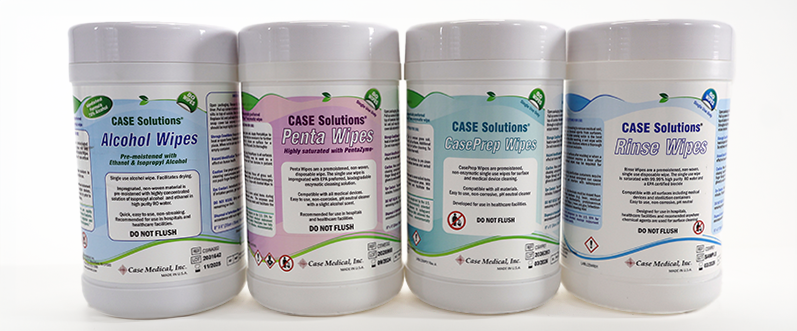
Case Medical supports best pratices and sustainability. We are recognized in the State of NJ for Environmental Innovation, by The Chemical Footprint Project as a National Front Runner and by U.S. EPA Safer Choice as a 2024 Partner of the Year. Our Case Solutions® Wipes are a easy-to-use and contain U.S. EPA Safer Choice ingredients. Start with our Case Solutions® cleaning wipes, then rinse and follow with subequent santitation. Remember: discard but do not flush.
Contact [email protected] for more information.
Connect with Case Medical on social media for more content!
LinkedIn
FaceBook
Kindest Regards,
